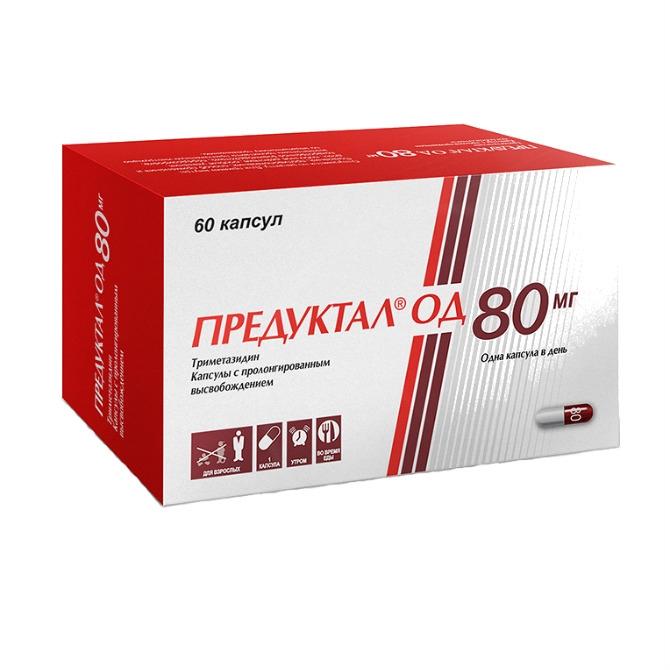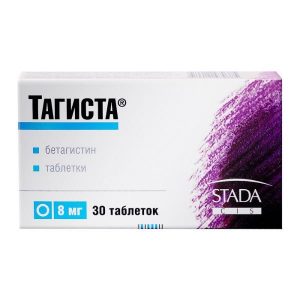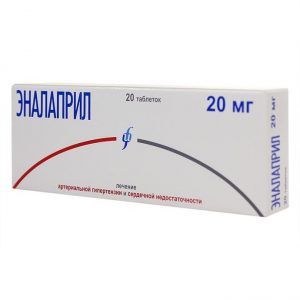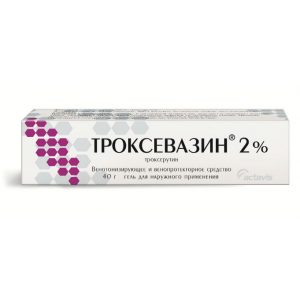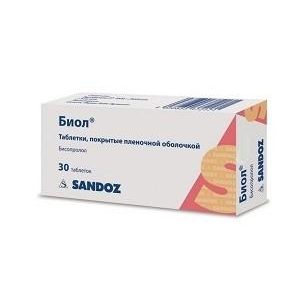Description
Release form
Sustained-release capsules hard gelatin, No. 2, with a white body and an orange-red lid on the lid, the company logo and the inscription 80 are white in color * capsule contents – spherical granules of white or almost white.
Pharmacological action of
Trimetazidine prevents a decrease in the intracellular concentration of adenosine triphosphate (ATP) by maintaining the energy metabolism of cells in a state of hypoxia. Thus, the drug ensures the normal functioning of membrane ion channels, transmembrane transfer of potassium and sodium ions and preservation of cellular homeostasis.
Trimetazidine inhibits fatty acid oxidation by selectively inhibiting the 3-ketoacyl-CoA-thiolase (3-CAT) enzyme of the mitochondrial long chain fatty acid isoform, which leads to increased glucose oxidation and accelerated glycolysis with glucose oxidation, which causes myocardium protection from ischemia. Switching energy metabolism from fatty acid oxidation to glucose oxidation underlies the pharmacological properties of trimetazidine.
Pharmacodynamic properties
– supports energy metabolism of the heart and sensorineural tissue during
ischemia – reduces the severity of intracellular acidosis and changes in transmembrane ion flux, arising from ischemia
– reduces the level of migration and infiltration of polynuclear neutrophils in ischemic and reperfused heart tissues
– reduces the size of the damage to the myocardium
– does not directly affect hemodynamic parameters.
In patients with angina pectoris, trimetazidine increases the coronary reserve, thereby slowing the onset of ischemia caused by physical activity, starting from the 15th day of therapy, it limits the fluctuations in blood pressure caused by physical activity, without significant changes in heart rate, significantly reduces the frequency of angina attacks and the need for taking short nitroglycerin action improves left ventricular contractility in patients with ischemic dysfunction.
The results of clinical studies have confirmed the efficacy and safety of trimetazidine in patients with stable angina pectoris, both in monotherapy and in combination therapy with insufficient effect of other antianginal drugs.
In a study of 426 patients with stable angina, the addition of trimetazidine (60 mg / day) to metoprolol therapy 100 mg / day (50 mg 2 times / day) for 12 weeks, statistically significantly improved exercise test results and clinical symptoms compared with placebo: the total duration of the stress tests was +20.1 s, p = 0.023, the total time of the load was +0.54 METs, p = 0.001, the time before the development of ST segment depression was 1 mm +33.4 s, p = 0.003, the time before the development of an angina attack +33.9 s, p <0.001, the number of angina attacks per week is -0.73, p = 0.014 and the consumption of short-acting nitrates per week is -0.63, p = 0.032, without hemodynamic changes. In a study of 223 patients with stable angina, the addition of trimetazidine at a dose of 35 mg (2 times / day) to therapy with atenolol at a dose of 50 mg (1 time / day) for 8 weeks led to an increase in the time until the development of ischemic depression of the ST segment by 1 mm (+34.4 s, p = 0.03) when performing stress tests in a subgroup of patients (n = 173), compared with placebo, 12 hours after taking the drug. This difference was also shown for the time of development of angina attacks (p = 0.049). There were no significant differences between the groups for other secondary endpoints (total duration of exercise tests, total exercise time, and clinical endpoints). In a study of 1962 patients with stable angina, trimetazidine in two dosages (70 mg / day and 140 mg / day) compared with placebo was added to atenolol therapy 50 mg / day. In the general population, including patients, both without symptoms and with symptoms of angina pectoris, trimetazidine did not show ergometric advantages (total duration of stress tests, time to 1 mm of ischemic ST segment depression, and time to development of an angina pectoris attack) and clinical endpoints . However, in a retrospective analysis in a subgroup of patients with symptoms of angina pectoris (n = 1574), trimetazidine (140 mg) significantly improved the total time of the stress test (+23.8 s compared to +13.1 s for placebo p = 0.001) and the time to the development of an angina attack ( +46.3 s compared to +32.5 for placebo p = 0.005). Pharmacokinetics Absorption After oral administration, Preductal ® OD trimetazidine has a linear pharmacokinetic profile and reaches Cmax in plasma approximately 14 hours after administration. In the intervals between doses of the drug (i.e., within 24 hours), the concentration of trimetazidine in the blood plasma for 15 hours after taking the drug remains at least 75% of Cmax. The equilibrium state is achieved after taking the 3rd dose (after 3 days). Eating does not affect the bioavailability of trimetazidine when taking the drug Preductal ® OD 80 mg. The distribution of Vd is 4.8 L / kg, which indicates a good distribution of trimetazidine in the tissues (the degree of binding to blood plasma proteins is quite low, about 16% in vitro). Excretion Trimetazidine is excreted mainly by the kidneys, mainly unchanged. T1 / 2 in young healthy volunteers is about 7 hours, in patients over 65 years old – about 12 hours. Renal clearance of trimetazidine directly correlates with CC, hepatic clearance decreases with age of the patient. Pharmacokinetics in special patient groups Patients older than 75 years may experience increased exposure to trimetazidine due to an age-related decrease in renal function. A special study was conducted in a population of patients over 75 years of age using trimetazidine tablets at a dose of 35 mg 2 times / day. The analysis performed by the kinetic population method showed an average twofold increase in plasma exposure in patients with severe renal failure (CC less than 30 ml / min) compared with patients with CC more than 60 ml / min. No safety features were found in patients over 75 years of age compared with the general population. The exposure of trimetazidine was increased on average 2.4 times in patients with moderate renal insufficiency (CC 30-60 ml / min), and on average 4 times in patients with severe renal insufficiency (CC less than 30 ml / min) compared with healthy volunteers with normal kidney function. No safety features were found in this patient population compared to the general population. The pharmacokinetics of trimetazidine in children and adolescents under the age of 18 has not been studied. Indications – long-term therapy for coronary artery disease: prevention of attacks of stable angina as part of mono- or combination therapy. Contraindications – severe renal failure (CC less than 30 ml / min) – Parkinson’s disease, symptoms of parkinsonism, tremor, restless legs syndrome and other related motor disorders – intolerance to fructose / sucrose, glucose malabsorption, glucose malabsorption syndrome sucrose / isomaltase and other fermentopathies associated with sucrose intolerance, , which is part of the drug – age up to 18 years (due to lack of sufficient clinical data) – hypersensitivity to any of the components of the drug. With caution, the drug should be prescribed to patients with severe hepatic insufficiency (from 10 to 15 points on the Child-Pugh scale), moderate renal insufficiency (CC 30-60 ml / min), patients older than 75 years (see sections Dosage regimen and Special instructions ). Use during pregnancy and lactation There are no data on the use of the drug Preductal ® OD in pregnant women. Animal studies have not revealed the presence of direct or indirect reproductive toxicity. Reproductive toxicity studies have not shown the effect of trimetazidine on reproductive function in rats of either sex. As a precaution, it is not recommended to use the drug Preductal ® OD during pregnancy. There are no data on the release of trimetazidine or its metabolites in breast milk. The risk to the newborn / child cannot be excluded. If it is necessary to use the drug Preductal ® OD during lactation, breastfeeding should be stopped. Special instructions Preductal ® OD is not intended for the relief of angina attacks and is not indicated for the initial course of therapy for unstable angina pectoris or myocardial infarction at the prehospital stage or in the early days of hospitalization. In the event of an attack of angina pectoris, treatment (drug therapy or a revascularization procedure) should be reviewed and adapted. Preductal ® OD can cause or worsen symptoms of parkinsonism (tremor, akinesia, increased tone), therefore, regular monitoring of patients, especially the elderly, should be carried out. In doubtful cases, the patient should be referred to a neurologist for an appropriate examination. In the event of motor impairment, such as symptoms of parkinsonism, restless legs syndrome, tremors, unsteady gait, Preductal ® OD should be permanently withdrawn. Such cases are rare and symptoms usually disappear after discontinuation of therapy: in most patients, within 4 months after discontinuation of the drug. If symptoms of parkinsonism persist for more than 4 months after discontinuation of the drug, should consult a neurologist. There may be cases of a fall associated with instability in the Romberg position and unsteady gait or a marked decrease in blood pressure, especially in patients taking antihypertensive drugs (see section Adverse effects). Caution is advised to administer Preductal ® OD to patients in whom exposure may be increased: for moderate renal failure (see Pharmacological Action and Dosage Regimen sections) for elderly patients over 75 years of age (see Dosage Regimen section). The preparation contains sucrose, therefore the drug is not recommended for patients with fructose intolerance, glucose-galactose malabsorption syndrome and sucrose-isomaltase deficiency. Influence on the ability to drive vehicles and control mechanisms During clinical trials, the effect of trimetazidine on hemodynamic parameters was not detected, however, during post-registration use, there were cases of dizziness and drowsiness (see section Adverse effects). These symptoms may affect the ability to drive vehicles and perform work that requires an increased rate of physical and mental reactions. Composition 1 caps. trimetazidine dihydrochloride (in granules) 80 mg. 1 sustained release capsule contains: film coated granules with a layer of trimetazidine dihydrochloride: 144.85 mg. Excipients: sugar spheres ** (710-850 microns) – 36.68 mg, hypromellose – 6.4 mg. The composition of the film coat of granules: ethyl cellulose – 8 mg, tributylacetyl citrate – 1.2 mg, talc – 12 mg. The composition of the mixture for dusting granules: talc – 0.43 mg, magnesium stearate – 0.14 mg. Hard gelatin capsule No. 2 with a white case and an orange-red lid, the company logo and the inscription 80 are white on the lid *: 61,000 mg. Capsule body composition: titanium dioxide (E171) – 0.732 mg, gelatin *** – 35.868 mg. The composition of the capsule cover: titanium dioxide (E171) – 0.122 mg, iron oxide red (E172) – 0.366 mg, gelatin *** – 23.912 mg. * Printing the logo and inscription on the capsule is applied in white ink, which includes shellac, titanium dioxide, simethicone, propylene glycol, ammonium hydroxide. The total amount of ink per capsule is approximately 0.15 mg. ** Composition of sugar spheres: sucrose – not more than 92% (in terms of dry matter), corn starch. May also contain starch hydrolysis products and dyes. *** Contains an average of 14.5% water (weight loss on drying). Dosage and administration The drug is taken orally, 1 capsule 1 time / day, in the morning during breakfast. Capsules should be taken whole without chewing, washed down with water. Evaluation of the benefits of treatment can be carried out after 3 months of use of the drug. If there is no improvement during this time, the use of the drug Preductal® OD should be discontinued. Duration of treatment is determined by the physician. In patients with moderate renal failure (CC 30-60 ml / min) (see sections Pharmacokinetics and Special instructions) a dose reduction is recommended, i.e. 1 tablet containing 35 mg of trimetazidine per day. Caution should be exercised in the treatment of patients with severe hepatic insufficiency (see the Special Instructions section), since the available data are limited and cannot completely exclude the absence of the effect of liver dysfunction on the metabolism of trimetazidine. Patients older than 75 years may experience increased exposure to trimetazidine due to an age-related decrease in renal function (see Pharmacokinetics section). In patients with moderate renal insufficiency (CC 30-60 ml / min), a dose reduction is recommended, i.e. 1 tablet containing 35 mg of trimetazidine per day. Dose selection in patients older than 75 years should be done with caution (see section Special instructions). Safety and efficacy of trimetazidine in patients under the age of 18 have not been established. No data available. Side effects Adverse reactions identified as adverse events, at least relevant to treatment with trimetazidine are given in the following gradation: very often (? 1/10) often (? 1/100, <1/10) infrequently (? 1/1000, <1/100) rarely (? 1/10 000, <1/1000) very rarely (<1/10 000), unspecified frequency (the frequency cannot be calculated from the available data). From the side of the central nervous system: often – dizziness, headache of unspecified frequency – symptoms of parkinsonism (tremor, akinesia, increased tone), staggering gait, restless legs syndrome, other associated motor disorders, usually reversible after discontinuation of therapy. Sleep disorders (insomnia, drowsiness). From the cardiovascular system: rarely – palpitations, extrasystole, tachycardia, marked decrease in blood pressure, orthostatic hypotension, which may be accompanied by general weakness, dizziness or loss of balance, especially with the simultaneous use of antihypertensive drugs, flushing of the face. From the digestive system: often – abdominal pain, diarrhea, dyspepsia, nausea, vomiting of unspecified frequency – constipation. From the liver and biliary tract: unspecified frequency – hepatitis. From the hemopoietic system: unspecified frequency – agranulocytosis, thrombocytopenia, thrombocytopenic purpura. From the skin and subcutaneous fat: often – a skin rash, itching, urticaria of unspecified frequency – Quincke’s edema, acute generalized exanthematous pustulosis. General disorders: often – asthenia. Drug Interactions Not observed. The patient must inform the doctor about all medications taken. Overdose There is only very limited information on an overdose of trimetazidine. Treatment: In case of overdose, symptomatic therapy should be given. Storage conditions The product should be stored out of the reach of children at a temperature not exceeding 25 ° C. Expiration 2 years. Pharmacy Conditionsth leave through pharmacies In retseptu lekarstvennaja form kapsul prolonhyrovannoho action Indications Angina pectoris, Ischemic Handy heart Possible product names Prodol OD capsules with prolonged release. 80 mg 60 pcs. Pharmstandard-Leksredstva, Russia
